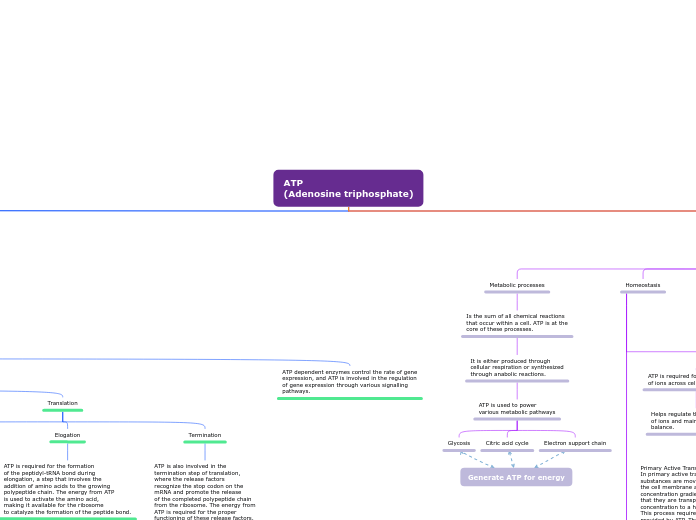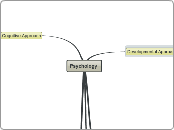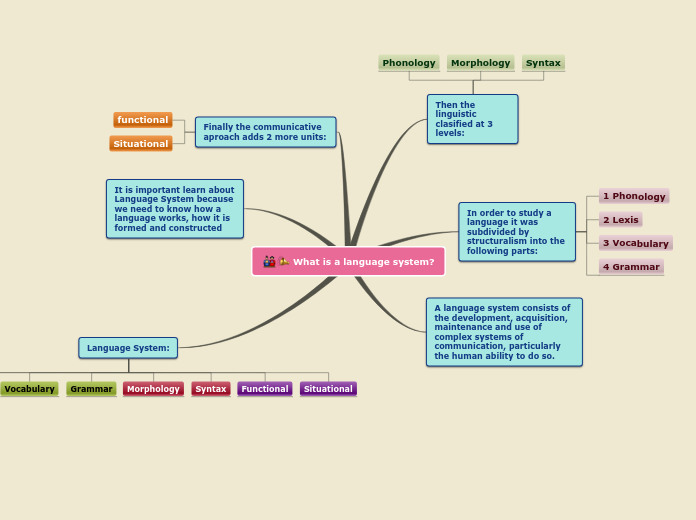are essential for
the growth and
development of
organisms.
These processes contribute to
population growth and the
dynamics of species
interactions within ecosystems.
Generate ATP for energy
ATP
(Adenosine triphosphate)
Choices in
Biology
Cellular biotechnologies
Gene modifications
Gene regulation: ATP also plays
a role in gene regulation, specifically
in the process of chromatin remodeling.
Chromatin remodeling involves the
modification of the DNA-protein complex,
which allows access to the DNA for
transcription factors and other regulatory
proteins. ATP provides the energy required
for the enzymes responsible for these modifications.
Transcription: ATP is involved
in the transcription process,
during which the genetic information
stored in DNA is transcribed into RNA.
ATP is required to power the enzymes
responsible for unwinding the DNA double
helix, separating the DNA strands, and
synthesizing the RNA molecule.
DNA repair: ATP is essential for
various DNA repair mechanisms,
such as mismatch repair, base excision
repair, and nucleotide excision repair.
These processes help maintain the integrity
of the genetic information by correcting
errors that may have occurred during DNA
replication or due to external factors like
reactive oxygen species.
DNA replication: During the
process of DNA replication,
ATP is required to power the
enzyme DNA polymerase, which
synthesizes new DNA strands.
ATP provides the energy needed
to separate the DNA strands, extend
the primer, and ultimately create a
complete copy of the DNA molecule.
Maintenance of Cellular Structure
ATP is required to maintain the
structural integrity of cells. It provides
the energy necessary for the synthesis
and breakdown of proteins, lipids, and
carbohydrates, which are essential
components of cellular structures.
Cellular Signaling
ATP acts as a signaling molecule
in cellular biotechnologies. It binds
to specific receptors on the surface of
cells and triggers various cellular responses,
such as cell division, differentiation, and apoptosis.
Energy Storage and Transfer
ATP stores chemical energy
and transfers it to other molecules
during cellular processes. This energy
transfer is essential for various cellular
activities, including muscle contraction,
active transport of ions across cell membranes,
and synthesis of macromolecules.
Population dynamics
ATP driven processes such as:
Protein synthesis
DNA replication
ATP is indirectly connected to
population dynamics. It plays a crucial
roll in:
Differentiation
Reproduction
Cell growth
Biological processes
and interactions
DNA Replication
During DNA replication,
ATP is required to power
the enzymes that unwind
and separate the DNA strands,
allowing for the synthesis of new
complementary strands. The
energy from ATP is utilized to
break the hydrogen bonds between
the base pairs, making it possible for
the replication machinery to move
along the DNA template.
Transcription
Transcription is the process
by which genetic information
stored in DNA is copied into RNA.
ATP is involved in this process
through the action of RNA
polymerase, the enzyme
responsible for unwinding the
DNA double helix and synthesizing
the RNA molecule. ATP provides the
energy necessary for RNA polymerase
to catalyze the formation of
phosphodiester bonds between
nucleotides in the RNA molecule.
Translation
During translation,
the genetic information
stored in mRNA is used to
synthesize proteins. ATP
plays a critical role in this
process by providing the energy
necessary for the ribosome to
move along the mRNA molecule
and for the formation of peptide
bonds between amino acids.
Additionally, ATP is required for
the proper folding and transport of
newly synthesized proteins.
Cellular respiration
Glycolysis: This process
occurs in the cytoplasm
and begins with glucose,
a six-carbon sugar. Through
a series of enzyme-catalyzed
reactions, glucose is broken
down into two molecules of
pyruvate, a three-carbon
compound. This process
generates a net gain of 2 ATP
molecules and 2 NADH molecules.
Citric Acid Cycle (Krebs Cycle):
Pyruvate enters the mitochondria
and is converted into acetyl-CoA,
which then enters the citric acid
cycle. This cycle involves a series
of chemical reactions that produce
energy-rich electron carriers
(NADH and FADH2) and high-energy
phosphate compounds (GTP and ATP).
The cycle also results in the release of
carbon dioxide, which is a waste product.
Electron Transport Chain:
The final stage of cellular
respiration occurs in the inner
mitochondrial membrane. The
electron carriers (NADH and FADH2)
generated in the previous stages
donate their electrons to the electron
transport chain. This chain uses these
electrons to pump protons (H+ ions)
across the membrane, creating a proton
gradient. As protons flow back into the
mitochondrial matrix through ATP
synthase, ATP is synthesized. This stage
generates the majority of ATP produced
during cellular respiration.
Photosynthesis
Role: ATP provides the
energy necessary for the
light-independent reactions
(Calvin cycle) to convert
carbon dioxide into glucose.
Production: ATP is produced
during the light-dependent
reactions of photosynthesis.
Hydrophilic Environment:
In hydrophilic environments,
ATP is more susceptible to
hydrolysis due to the presence
of water molecules.
ATP can readily release its energy
for cellular processes in hydrophilic
environments.
Hydrophobic Environment:
ATP is protected from water
and hydrolysis due to the
hydrophobic nature of the
environment.
This protection allows
ATP to serve as an energy
carrier within hydrophobic
compartments of cells.
Homeostasis
Secondary Active Transport:
In secondary active transport,
substances are moved across
the cell membrane along their
concentration gradient, which
means that they are transported
from a higher concentration to a
lower concentration. This process
also requires energy, which is
provided by ATP.
Primary Active Transport:
In primary active transport,
substances are moved across
the cell membrane against their
concentration gradient, which means
that they are transported from a lower
concentration to a higher concentration.
This process requires energy, which is
provided by ATP. The energy derived
from ATP is used to power transport
proteins, such as ion pumps, which
actively transport ions across the
membrane.
The maintenance of a stable
environment within an
organism. Homeostasis is
directly linked to ATP as it is
essential for maintaining
cellular functions.
ATP-driven enzymes
are involved in:
Breakdown
Synthesis
Of glucose
ATP is required for active transport
of ions across cell membranes.
Helps regulate the concentration
of ions and maintain osmotic
balance.
Metabolic processes
Is the sum of all chemical reactions
that occur within a cell. ATP is at the
core of these processes.
It is either produced through
cellular respiration or synthesized
through anabolic reactions.
ATP is used to power
various metabolic pathways
Electron support chain
Citric acid cycle
Glycosis
Biological molecules
Molecular genetics
The study of genes and
their expression at the
molecular level. Molecular
genetics is connected to
ATP through the regulation
of gene expression.
ATP dependent enzymes control the rate of gene
expression, and ATP is involved in the regulation
of gene expression through various signalling
pathways.
As well as the processes of:
Translation
ATP is also involved in the
termination step of translation,
where the release factors
recognize the stop codon on the
mRNA and promote the release
of the completed polypeptide chain
from the ribosome. The energy from
ATP is required for the proper
functioning of these release factors.
Elogation
ATP is required for the formation
of the peptidyl-tRNA bond during
elongation, a step that involves the
addition of amino acids to the growing
polypeptide chain. The energy from ATP
is used to activate the amino acid,
making it available for the ribosome
to catalyze the formation of the peptide bond.
ATP is needed for the
formation of the initiation complex,
which includes the small ribosomal subunit,
mRNA, and initiator tRNA. The energy
provided by ATP helps to recruit the
necessary factors and components
for the initiation step.
Transcription
Termination
ATP is involved in the termination
of transcription by aiding in the
release of the newly synthesized
RNA molecule and RNA polymerase
from the DNA template.
Elongation
ATP is needed for the unwinding
of the DNA double helix, allowing
RNA polymerase to transcribe the
DNA into RNA.
Initiation
ATP is required for the
binding of RNA polymerase
to the promoter region of
the DNA.
Replication
Phosphorylation Reactions
where phosphate groups are transferred
from ATP to specific molecules, activating
them for their respective functions in replication.
Energy for Nucleotide Addition
The synthesis of new DNA strands
by DNA polymerase also requires ATP.
As nucleotides are added to the growing
DNA strand, ATP hydrolysis provides the
energy necessary for this process.
Energy Source for Helicase
the enzyme helicase unwinds the double-stranded
DNA to expose the individual nucleotides for replication.
This process requires energy, which is provided by ATP.
ATP hydrolysis provides the energy
needed to drive the helicase activity,
allowing it to separate the DNA strands.
ATP is required for synthesis of:
DNA
ATP is required for the
replication of DNA.Essential for
growth, repair, and maintenance
of the cells. Polymerase utilizes ATP
to catalyze the addition of nucleotides
to the growing DNA strand.
RNA
ATP is necessary for the
transcription of DNA
into RNA. It also helps in
the termination of
transcription and the release
of the RNA molecule from the
DNA template.
Biochemistry
Nucleic acids
RNA Degradation
In addition to synthesis and
processing, ATP is also involved
in the degradation of RNA molecules.
The enzymes responsible for RNA
degradation, such as RNases, utilize
ATP to bind and cleave the RNA
molecules, ensuring their timely
removal and turnover.
RNA Processing
After transcription, RNA molecules
undergo various processing steps,
such as splicing and capping. These
processes require ATP to power the
enzymes responsible for the modifications.
Transcription
Transcription is the process
by which DNA is transcribed into RNA.
ATP is involved in this process through
the action of RNA polymerase, the enzyme
responsible for synthesizing RNA from a DNA
template. ATP is required for RNA polymerase
to bind to the DNA template, unwind the double
helix, and synthesize the RNA molecule.
DNA Repair
In cases where DNA is damaged,
ATP is needed for the repair process.
DNA repair enzymes, such as DNA
glycosylases and DNA polymerases,
utilize ATP to remove and replace
damaged nucleotides. These enzymes
require ATP to bind to the damaged site,
initiate the repair process, and ultimately
restore the integrity of the DNA molecule.
DNA Replication
During DNA replication,
ATP is required to provide
the energy necessary for
the synthesis of new DNA
strands. The enzyme DNA
polymerase uses ATP to bind
and separate the two strands
of the DNA helix, creating a
replication fork. This energy is
then used to add deoxyribonucleotides
to the growing DNA strands, ensuring
the fidelity and accuracy of the
replication process.
Lipids
Regulation of Lipid Metabolism:
ATP acts as an allosteric regulator
in various enzymes involved in lipid
metabolism, influencing their activity
based on cellular energy status.
Fatty Acid Oxidation:
ATP is utilized in the
activation of fatty acids
before they undergo beta-oxidation
to produce energy.
Fatty Acid Synthesis:
ATP powers the initial
step of fatty acid synthesis,
where acetyl-CoA is carboxylated
to form malonyl-CoA.
ATP Citrate Lyase:
ATP citrate lyase uses ATP to
cleave citrate into acetyl-CoA and
oxaloacetate, which are important
precursors for lipid synthesis.
Role of ATP in Lipid Metabolism:
ATP is essential for the synthesis
and breakdown of lipids.
It provides the energy required
for lipid biosynthesis and fatty acid
activation.
Proteins
Primary Structure:
ATP can bind to specific
amino acids in the primary
structure of proteins. For
example, the amino acid
aspartate can be phosphorylated
by ATP, leading to the formation
of aspartyl phosphate, which is
involved in various cellular
processes.
Secondary Structure:
ATP can also affect the
secondary structure of
proteins by stabilizing or
destabilizing their conformations.
For instance, ATP binding can
help maintain the correct folding
of proteins, ensuring they adopt
the appropriate secondary structure
necessary for their function.
Tertiary Structure:
ATP can influence the
tertiary structure of proteins
by allosterically regulating
their conformation. In this
process, ATP binding to a
protein can induce a
conformational change that
alters the protein’s activity,
allowing it to perform its function
more effectively.
Quaternary Structure:
ATP can also modulate the
quaternary structure of
proteins by influencing the
interactions between different
subunits of a multimeric
protein complex. This can lead
to changes in the protein’s
function or activity, depending
on the specific protein and its
role in the cell.
Carbohydrates
ATP production:
Carbohydrates are
broken down into
glucose, which enters
the process of
glycolysis to produce ATP.
Glycolysis: Glucose is
converted into pyruvate
through a series of enzymatic
reactions, generating ATP and
NADH.
Oxidative Phosphorylation:
In the presence of oxygen,
NADH and FADH2 produced
from glycolysis enter the
electron transport chain to
generate more ATP through
oxidative phosphorylation.
Study of chemical processes within living
organisms.
Directly linked to ATP as it
investigates the structure, function,
and interactions of biomolecules such
as proteins, carbohydrates, and
nucleic acids.
Provides energy for
numerous cellular
processes.









